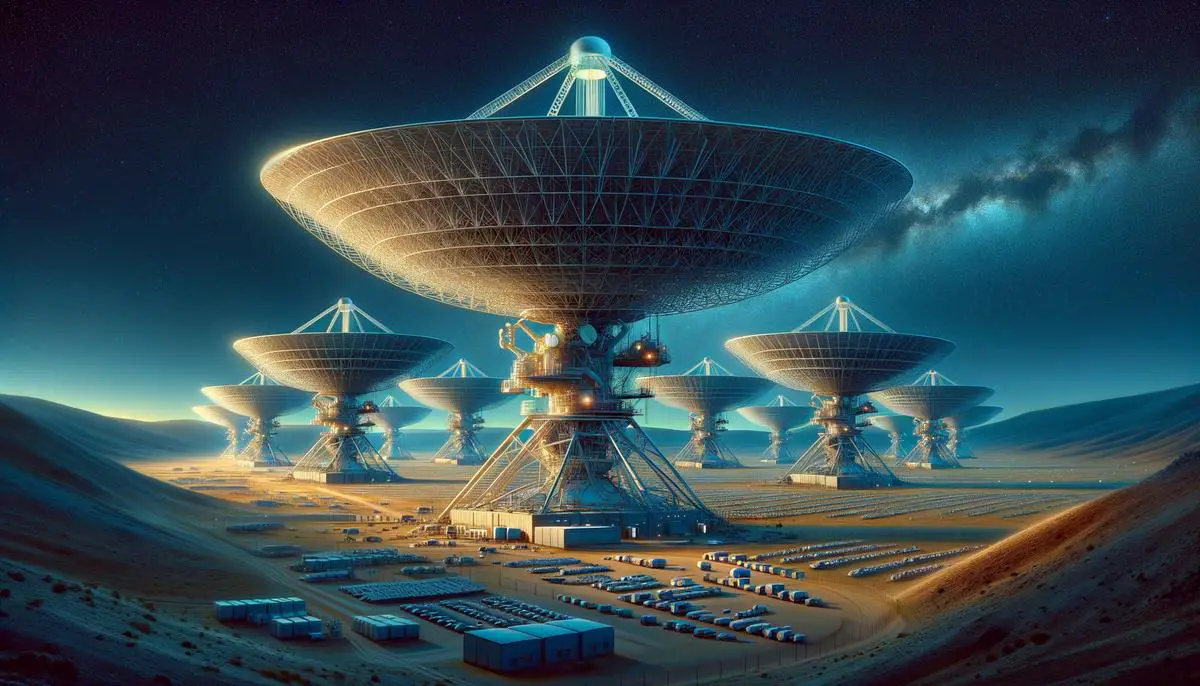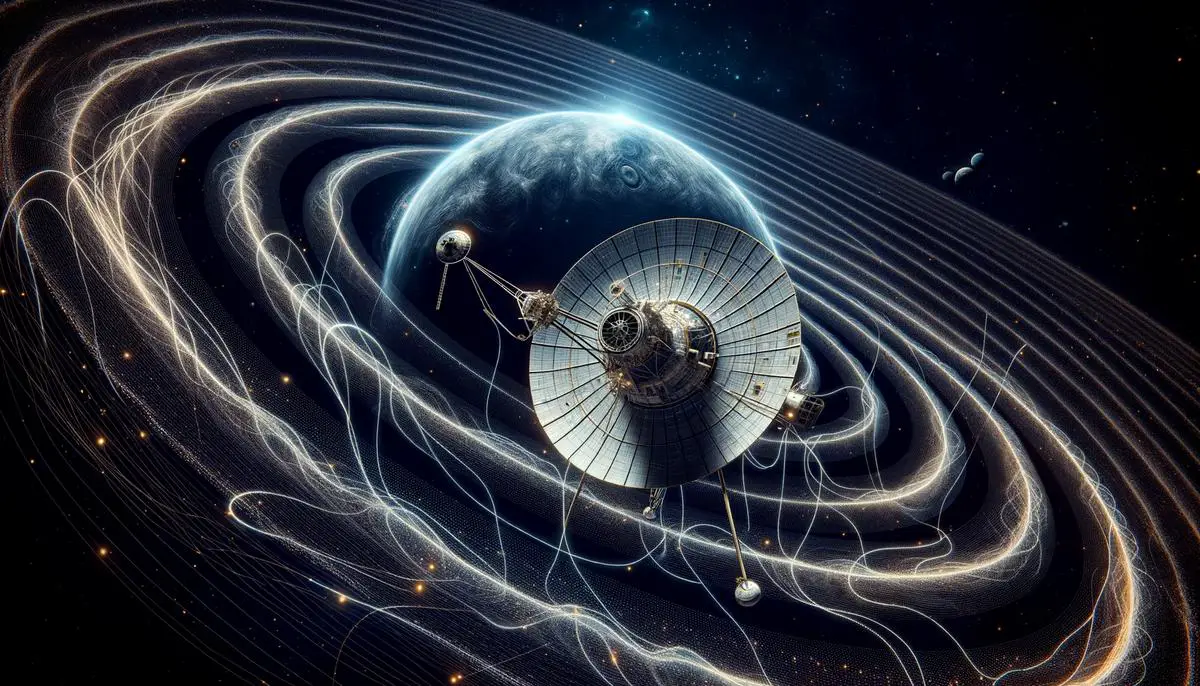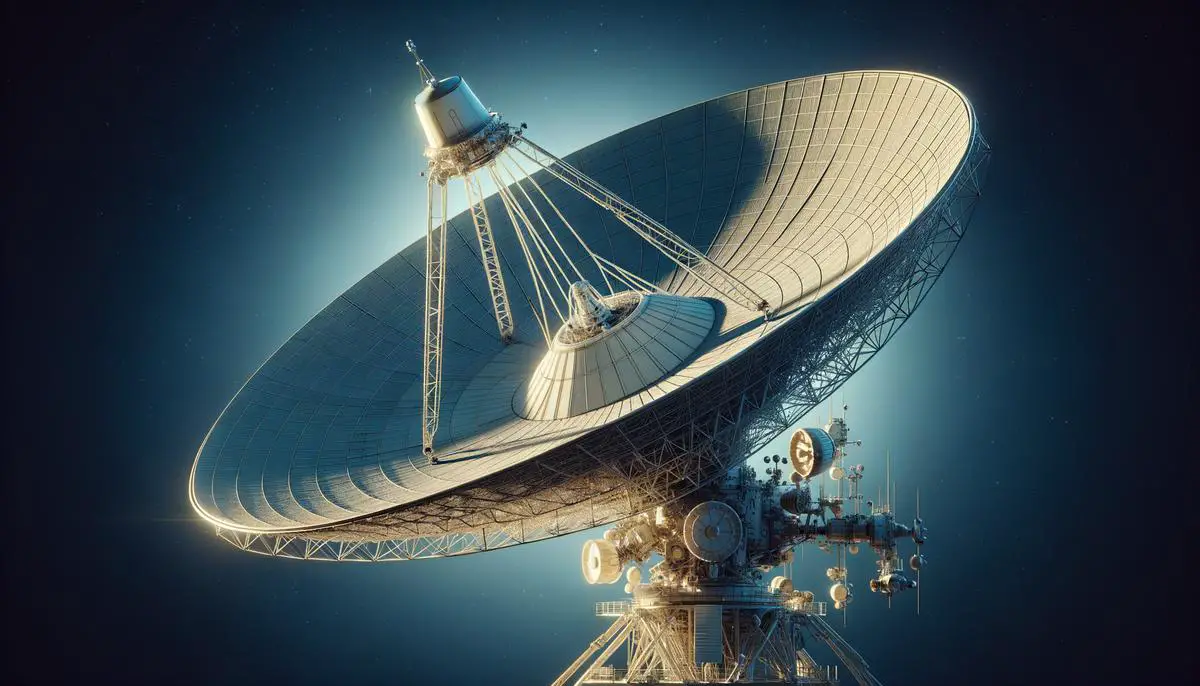Communicating across the vast distances of space presents a series of challenges and requires innovative solutions, as demonstrated by the Voyager missions. The ability to maintain a line of communication with spacecraft billions of miles away from Earth is a testament to human ingenuity and technological advancement. This discussion sheds light on the engineering marvels and strategic adjustments that have enabled continuous dialogue with Voyager, highlighting the importance of adaptability and forward-thinking in overcoming obstacles.
The Engineering Marvel of Voyager’s Communication System

The Role of NASA’s Deep Space Network in Voyager’s Journey

Challenges and Solutions in Deep Space Communication
Communicating with Voyager as it traverses the vastness of space presents a unique set of challenges, from technical to environmental. One primary hurdle is the increasing delay encountered as messages travel across the expanding gulf of space. A signal that once took mere hours to reach Earth now takes over 17 hours, creating a scenario where immediate feedback or swift adjustment of the spacecraft's systems is impossible.1
The dwindling strength of communication signals due to immense distance poses another considerable challenge. As Voyager moves farther away, its signals weaken, akin to a whisper amidst the cosmic roar. To address this, NASA implements ultra-sensitive receivers and sophisticated error-correction algorithms, helping pick out Voyager's messages from the vast sea of background noise, ensuring even the faintest signals can be amplified and translated into usable data.
Seasonal and astronomical factors also play a significant role in communication efforts. Earth's orbit around the sun can create alignment issues, making it harder to maintain a direct line of communication. Strategic planning dictates the timing of message transmissions, ensuring that when Earth is best positioned to "hear" Voyager, the DSN stations are ready to listen.
Voyager's journey and its continuous stream of data have been made possible by notable adjustments and advancements. Adjusting the spacecraft's orientation towards Earth is a meticulous maneuver requiring precise commands and calculated timing to ensure its antenna remains aligned with our planet. This crucial task is complicated by the time it takes for commands to reach Voyager and then for confirmation of successful realignment to return.
NASA has innovated and found solutions to unexpected problems, such as congenial hardware within the Deep Space Network aging or the need for more power-efficient communication methods. The introduction of newly developed software and the upgrade of equipment testify to the dynamic problem-solving approach adopted to keep in touch with Voyager.
Environmental factors near Voyager also present unique communication challenges. Space weather phenomena, including solar flares and cosmic rays, can disrupt communications.2 Engineers continuously analyze space weather reports and adjust communication strategies accordingly, ensuring the DSN can maintain a connection with Voyager, despite the capricious nature of space weather.
Maintaining a skilled workforce capable of managing this complex communication system is critical. Training and developing a new generation of engineers and technicians who can navigate the aging technology aboard Voyager and the ever-advancing ground systems on Earth ensure that knowledge is passed on and that Voyager continues to communicate its invaluable observations back to Earth.
Sustaining communication with Voyager demands a symphony of precise engineering, advanced technology, and meticulous operational coordination. The solutions crafted in response to these challenges underscore humanity's unyielding curiosity and our relentless pursuit to explore beyond our celestial neighborhood.

Voyager’s Legacy and Future in Interstellar Communication
Advancements in communication technology sparked by Voyager's journey hint at a future where spacecraft can venture beyond the solar system's limits with a lifeline back to Earth. These innovations lay the groundwork for next-generation spacecraft to stay in touch, even as they explore the vast unknown. Deep Space Network's triumphs with Voyager suggest a model for scalable and adaptable communication networks. As humanity eyes missions to more distant realms, development efforts could focus on miniaturizing communication tech without sacrificing power or clarity.
Future missions might leverage quantum communication technologies, promising secure and instant contact across astronomical distances, inspired by the prowess demonstrated in keeping Voyager connected.3 This leap forward could revolutionize the blueprint for interstellar probes, embedding robust communication systems that withstand the complexities of space travel while ensuring incessant data flow. Voyager's odyssey propels engineers to devise novel antenna designs and signal processing algorithms aimed at capturing whispers from the cosmos more efficiently.
The collaborative international effort required to sustain Voyager's connection foreshadows a blueprint for managing and orchestrating future deep space communications networks. A global consortium of ground stations, equipped with next-gen technology, could ensure uninterrupted dialogue with interstellar voyagers. The pursuit of interstellar exploration may also breed new international partnerships, unifying nations under the common goal of unlocking the universe's mysteries.
Learning from Voyager's resilience and the intricate dance of repositioning to maintain contact, future spacecraft designs could incorporate autonomous, AI-driven systems for maintaining optimal orientation towards Earth. This self-correcting mechanism would buffer missions against potential communication misalignments, ensuring continuous data transmission even in the most unpredictable conditions.
The continuous upgrading and refinement of the Deep Space Network in response to Voyager's increasing distance serve as a testament to the benefits of anticipatory innovation. As spacecraft venture further, dynamic and forward-thinking upgrades to Earth's communication infrastructures will be critical. Initiatives might include:
- Deploying space-based relay stations
- Harnessing celestial bodies as natural satellites to bounce signals across space, bridging the cosmic distances
The psychological impact of Voyager's messages on humanity—serving as a beacon of our interstellar aspirations—highlights the importance of storytelling in space exploration. Future missions could deliver not just data but also narratives that captivate and inspire, making the infinite expanse less daunting and more familiar to humankind.
Voyager's enduring connection whispers to us not just secrets of space but also blueprints for tomorrow's odysseys—a beacon guiding us towards a future where the cosmos feels within our reach, and no distance is too vast for humanity's boundless curiosity.

In conclusion, the enduring connection with Voyager serves as a powerful reminder of what can be achieved when ingenuity, technology, and strategic planning converge. It’s a narrative that not only celebrates past achievements but also sets the stage for future endeavors in space communication. The lessons learned from Voyager’s journey illuminate the path forward, ensuring that no distance is too great for human curiosity and our quest for knowledge.
- Greicius T. Voyager – Mission Status. NASA. Published August 9, 2017.
- Odenwald S. The Effect of Space Weather on NASA's Deep Space Network (DSN). NASA. Published June 13, 2018.
- Datta A, Shaji A, Caves K, et al. Quantum Communication with Dark Photons. Physical Review A. 2020;101(4):042312. doi:10.1103/PhysRevA.101.042312
![]()
